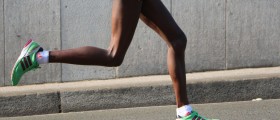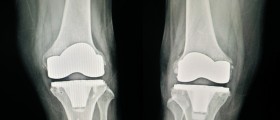
The term 'shin splints' is used for pain that spreads along or behind the shinbone. This is the larger of the two leg bones. Shin splints are medically known as medial tibial stress syndrome and they generally occur during different kind of physical activity. In order for one to experience shin splints this physical activity must be associated with too much force placed on the shinbone and surrounding muscles and connective tissues.
It is important to memorize that shin splints actually do not represent a medical condition per se. The problem is only temporary and can be simply avoided with some preventive measures.
Shin Splints Characteristics
Shin splints typically cause tenderness, soreness or pain along the inner part of the lower leg. Furthermore, there may be mild swelling of the area. Initially, the pain stops once an individual discontinues physical activity, but it may easily reoccur if the activity is continued.
How to Prevent and Deal with Shin Splints?
Most of the time shin splints are easily dealt with rest, ice and similar self-care measures. So, if the problem occurs, one is due to abstain from activities that trigger the pain and have proper rest. Additional help is obtained from ice cubes wrapped in cloth and applied onto the affected area for a period of approximately 15 minutes. This should be repeated 3-4 times per day and if pain does not subside, one may take some pain killers.
There are several precautionary measures which can efficiently prevent shin splints. First of all, one should get rid of old and ill-fitting shoes. By wearing proper footwear the pressure on the shinbone will not be excessive and the pain will not occur. So in order to participate in some physical activity one is supposed to purchase adequate footwear. If one is not sure what type of footwear is the best for the specific activity, he/she should consult a professional and get suitable advice.
Warming up
Furthermore, it is essential to warm up prior starting with the actual physical activity. A warm up is significant because it increases blood flow, reduces muscle stiffness and increases joint mobility. Even if one warms up and still faces shin splints, maybe he/she should reconsider modifying the exercise routine. Many times, people (especially athletes) exert themselves in the name of fitness. This leaves trace on the entire musculoskeletal system and is associated with higher risk of injuries. Such behavior is frequently accompanied by shin splints. So, do not overexercise, chose adequate gear, prepare for the training and you will not have to deal with pain associated with shin splints.

















Your thoughts on this
Loading...